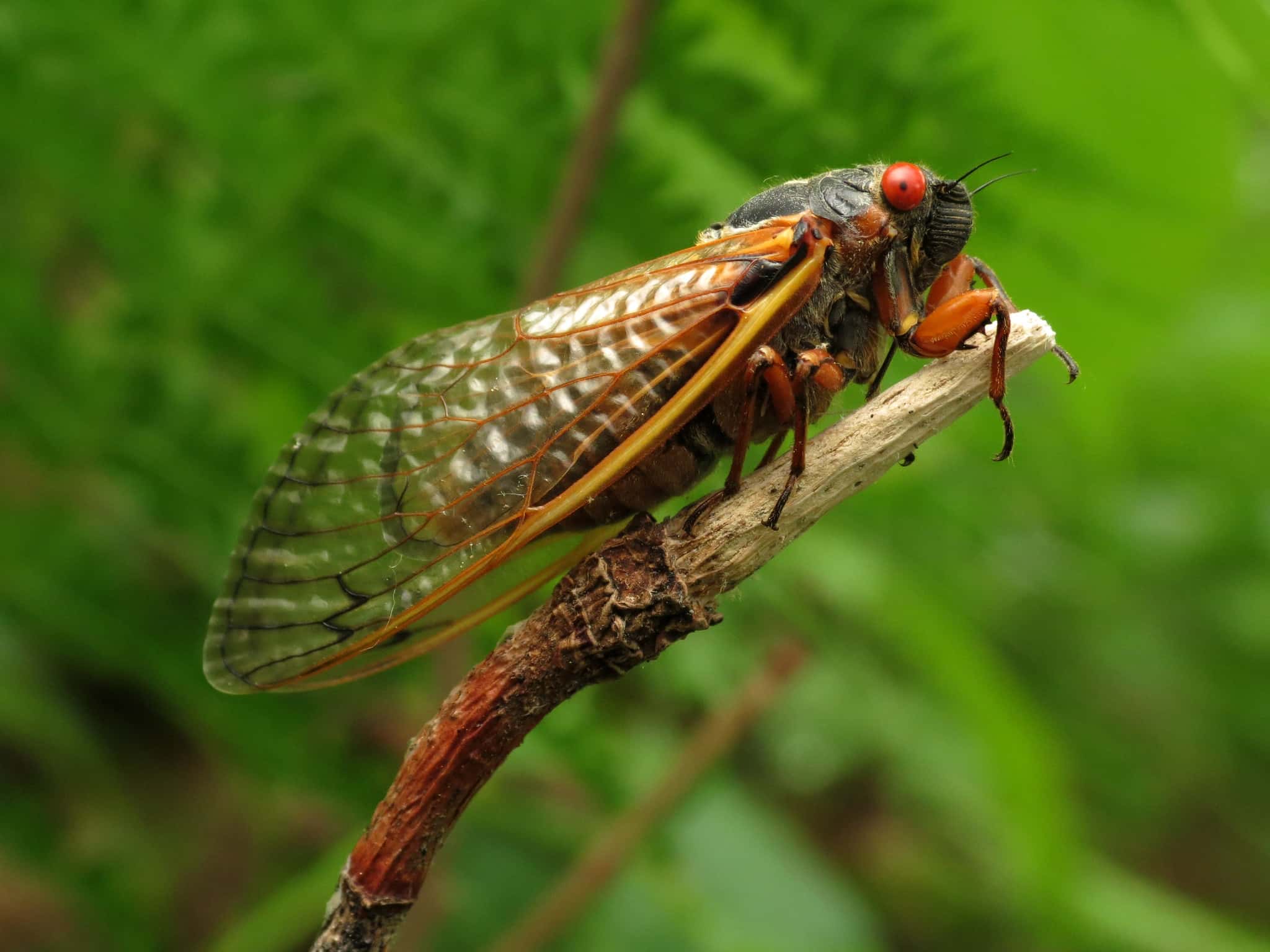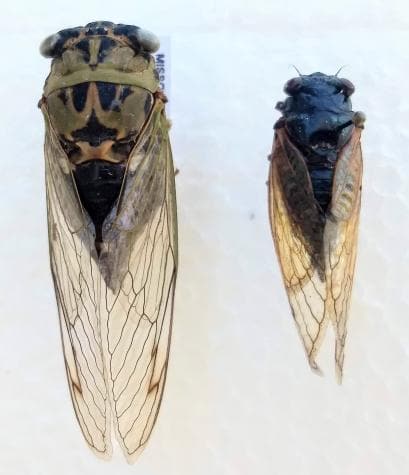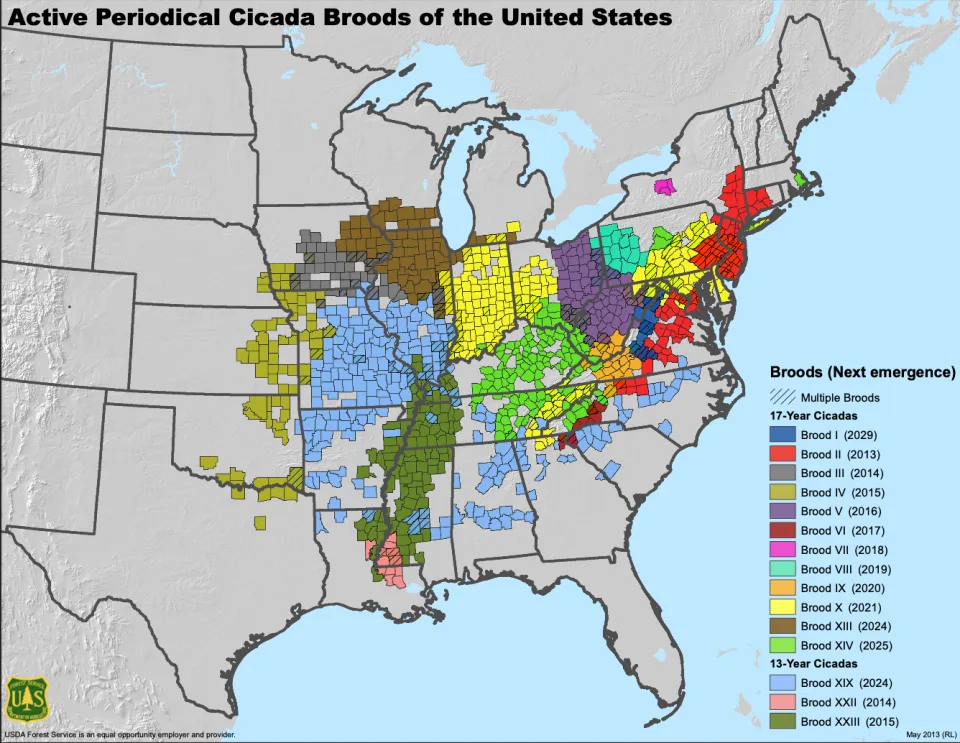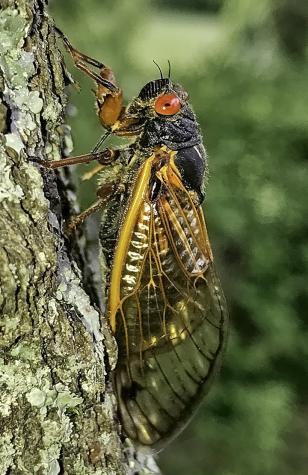
Cicadas undertake one of the most remarkable life cycles in the animal kingdom. Its timeline varies too. There are two types of cicadas: annual and periodical. While annual cicadas appear every year, it’s the periodical cicadas that are truly intriguing.
Periodical cicadas spend the majority of their lives underground as nymphs, only to emerge synchronously across vast areas after 13 or 17 years, depending on the species. This long developmental phase, spent in the quiet darkness beneath the soil, is a growth period during which the nymphs feed on sap from tree roots.
The emergence of cicadas is a spectacle of nature that transforms the landscape. Male cicadas climb to the tree branches to sing in chorus, a call to attract mates. This chorus can reach astonishing volumes, sometimes as loud as a rock concert. After mating, female cicadas lay their eggs in tree branches, and, when the eggs hatch, the new nymphs fall to the ground and burrow into the soil. And the cycle begins anew.
Considering both the spectacle and the long waiting period, a cicada spawning season is a big deal in the eastern and midwestern United States. But this year marks a unique occasion: both a 13-year brood and a 17-year brood will emerge simultaneously. A “brood” is scientific term for a group of cicadas that emerge synchronously.
When this occurs, sometime around mid-May, a huge number of cicadas will descend — and particularly upon Illinois. We’re talking hundreds of trillions — maybe quintillions. It’s the first time since 1803, when the president was Thomas Jefferson, that two broods will emerge at the same time. The next double-tap cicada event won’t occur until 2037.
The cicada double-whammy
Map of dual cicada brood emerging in 2024. Source: The Cidada Project at the University of Connecticut/The Washington Post.
Broods are categorized based on their geographical location and the timing of their emergence. Each brood is assigned a unique Roman numeral for identification. There are 15 identified broods of periodical cicadas in the United States. Of these, 12 are 17-year cicadas and 3 are 13-year cicadas.
These broods emerge in different years and in different geographical locations, often covering specific areas in the eastern and central United States. Over time, scientists and nature enthusiasts have thoroughly mapped the location and cycles of each brood, which is how we know when and where an emergence will occur.


This spring and early summer, Brood XIX (known as the Great Southern Brood) will emerge in Missouri, Arkansas, southern Illinois, Tennessee, Alabama, Georgia, the Carolinas, and surrounding states from its 13-year-old slumber. Brood XIII, or the Northern Illinois Brood, will molt out of its 17-year cycle in Illinois, Iowa, and Wisconsin. The next co-emergence of these two particular breeds won’t occur for another 13 x 17 years (221 years).
The exact timing of when this will occur is uncertain. Once the insects are mature and the surrounding soil reaches 64 degrees Fahrenheit (17 degrees Celsius), the cicadas are good to go.
The territory where the two broods coincide is not very large, which may be a good thing considering the disruption this may cause. Scientists are particularly excited because it’s so rare to see two distinct populations of periodical cicadas emerge together. They will be particularly on the lookout for any interbreeding events and what might come out of it.
The 13- and 17-year cicadas are different species, which explains their different periodicity. There are nine species of periodical cicadas, seven of which live in the United States, part of the genus Magicicada. However, there are a total of over 3,400 species of cicadas in the world, underscoring just how special the periodical variety can be.


Adult periodical cicadas typically measure about 1 to 1.5 inches (2.5 to 3.8 cm) in length. They possess a striking black body that provides a stark contrast to their bright red eyes. They have transparent wings that have prominent veins and are held roof-like over their bodies when at rest.
A song as loud as a jet engine
A trained eye can distinguish between the different species of cicadas. However, you don’t have to be an entomologist to notice the difference between two different broods if you rely on your ears. While the physical differences between species are very slight, the calls made by the male insects are distinct. Each brood makes a different set of songs, which the females recognize as their mating rallying call.
The mechanism behind their ability to produce such powerful sounds is a fascinating example of nature’s ingenuity in design.
Male cicadas are equipped with a pair of specialized organs called tymbals, located on the sides of the abdominal base. The tymbal is a ribbed membrane that the cicada can rapidly contract and relax using a muscle. This action causes the tymbal to buckle inwards and then snap back to its original position, creating a click sound with each buckle. When these clicks are produced rapidly in succession, they generate the cicada’s characteristic buzzing or singing sound. Cicadas are actually drawn to the vibrating sounds of power tools and lawnmowers, which resemble their songs.


The abdomen of the male cicada acts as a resonating chamber, amplifying the sound to levels that can exceed 100 decibels at a distance of 20 inches (50 cm) away in some species, making cicadas one of the loudest insects in the world.
While the prospect of trillions of cicadas spawning out of thin air may sound menacing, there’s no real cause for concern. They don’t sting or bite. They’re not pests and besides the noise (and the smell), they’re not much of a nuisance. One thing’s for sure, birds love them (for lunch).
The reason behind the specific 13- or 17-year cycles of periodical cicadas remains debatable. These prime numbers are thought to help avoid synchronization with the life cycles of potential predators, a strategy that enhances their survival. When cicadas finally emerge, their synchronized appearance in overwhelming numbers ensures that predators cannot possibly eat them all.
Besides birds, mammals, reptiles, and even some fish like to eat these insects. As for us humans, we can be content with the experience of their loud and magical spectacle.
Thanks for your feedback!


